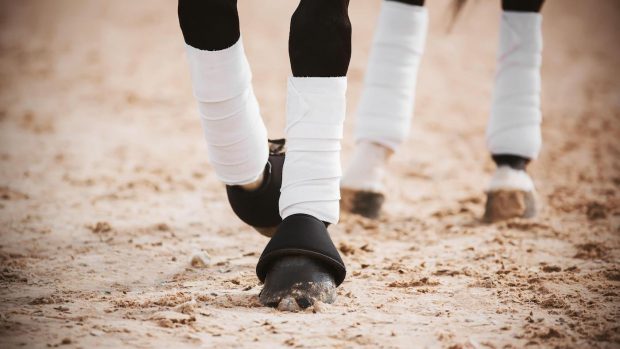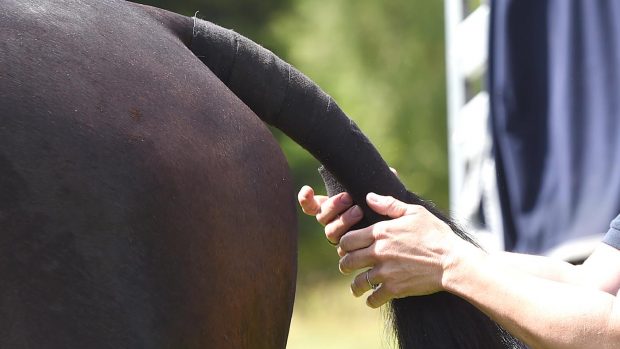When faced with the prospect of bandaging a knee or hock, many horse owners don’t really know where to start. In most cases the vet will have applied the initial dressing while the owner was busy holding the horse.
Linda Loins of the equine nursing team at the Bell Equine Veterinary Clinic says: “Most people have an idea of how to apply a figure of eight bandage on the knee or hock. However, many forget that the point of the hock and back of the knee should be left uncovered, if possible, to allow for movement and avoid friction sores.”
Pressure sores can occur within hours, while deeper tendon and soft tissue problems can occur from repeated tight bandaging or from a tight bandage being left on too long.
Problems can be avoided by being aware of a few simple facts:
- Always bandage legs in pairs. If the near side foreleg is injured then apply a stable bandage to the off-side fore to offer the leg support while it carries most of the horse’s weight.
- Stable bandages should be applied from just below the hock or knee to just above the coronary band.
- Always use a layer of padding such as gamgee before applying the bandage. This helps spread the pressure, reducing the chance of sores.
- Ensure the bandage is not applied too tightly or with uneven pressure.
- Bandages designed to stick to themselves should be applied carefully to ensure a correct level of tension and should be changed daily.
Bandaging the hoof
Keeping dressings on a horse’s hoof is notoriously difficult. Self-adhesive bandages, a roll of duct tape and a newborn baby’s nappy are the perfect, if somewhat unlikely, combination of materials for this job.
Once the dressing is in place, the nappy is ideally shaped to provide absorbent padding while keeping the area dry and can be held in place with a combination of duct tape and the bandage. Either a T- or star-shaped duct tape design is normally most successful in keeping the protection in place.
Be careful not to bandage too tightly around the coronet band as this is susceptible to pressure and could cause further problems.
| Don’t miss the latest accident and emergency feature, which focuses on bites and abscesses in last Thursday’s Horse & Hound (14 August), or click here to subscribe and enjoy Horse & Hound delivered to your door every week. |




